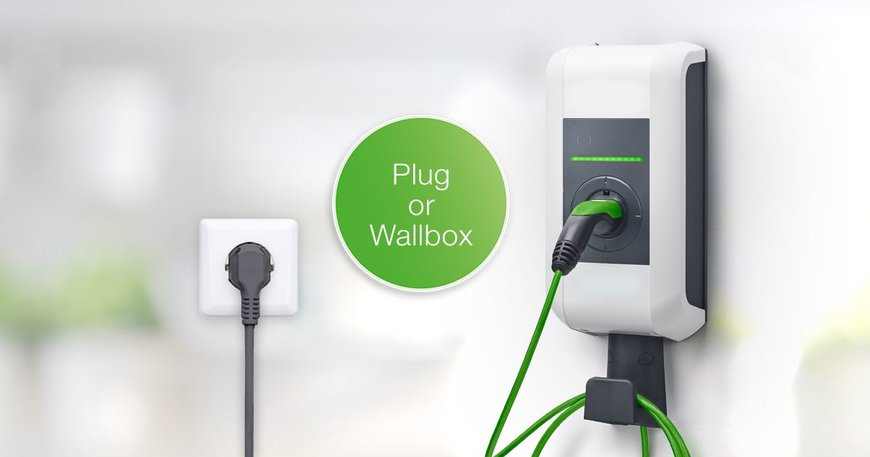www.auto-innovations.net
17
'21
Written on Modified on
KEBA News
Plug or wallbox?
3 reasons why it’s a good idea to install a wallbox.

The standard delivery of an electric car in Europe usually includes a Type 2 charging cable that can be used for charging at a public charging station or wallbox with a socket, as well as a so-called emergency power cable with a type F plug for the standard household 230 V socket. You can use this emergency power cable to charge your e-car (or PHEV) in your garage at home. But should you really do that? There are several reasons why you shouldn't.
More safety thanks to RCD and larger cable cross-section
During a charging session with an emergency charging cable, an electric car uses almost as much electricity as an oven - and it does so for many hours. Standard cable cross-sections and sockets are not designed for this, which is why the cooker and oven at home are always connected using larger cables. To illustrate this more clearly: If an electric car is charged at home using the emergency power cable, it is like forcing the entire power consumption of a household through a single cable and plug - because the annual consumption of an average electric car with average mileage is roughly equivalent to the average household consumption. This is why overheating and, in the worst case, a cable fire can quickly occur. The professional installation of a wallbox by a specialist electrical installer, if not already in place, is always accompanied by the laying of a sufficiently dimensioned cable, checking the need for a residual current circuit breaker and the selection of the correct line circuit breaker, which ensures safe charging.
More safety and comfort thanks to the wallbox
Another advantage of a wallbox is its integrated residual current monitoring. It prevents the lights from going out in the house if problems should arise during the charging process. Apart from that, the wallbox automatically resumes charging after unexpected faults (such as overvoltage or undervoltage in the supply network or even a total power failure). This means that you are not surprised by a low battery level when you start your next journey. An intelligent wallbox (such as our KeContact P30 x-series) even adjusts the charging power to the domestic electrical installation and throttles the charging currents if necessary. All KEBA wallboxes also directly measure the socket temperature and also reduce the current flow in the event of dirty or damaged charging contacts, for example.
All KEBA wallboxes also measure their own operating temperature and regulate the power depending on this. In addition, they interrupt the current flow in the event of dirty or damaged charging contacts and an error message is shown on the LED display.
Faster charging thanks to the wallbox
Another important aspect is the charging speed. The charging power of the emergency power cable is limited to 2.3 kW. This means that an electric car with an average battery capacity of 55 kWh has to be connected to the power supply for almost 24 hours to be charged from minimum to maximum level. A vehicle with a larger battery will need correspondingly longer. For most EV models, a wallbox allows charging at 11 kW, which reduces the charging time of the example vehicle to just 5 hours. It is even faster if the network operator, the house installation and the electric vehicle itself permit 22 kW charging power. In this case, the wallbox can recharge up to 150 km per hour, depending on the vehicle's consumption.
So there are more than just a few good reasons to charge at home with a wallbox and to really only consider the emergency charging cable for what it is: an emergency solution.
www.keba.com

